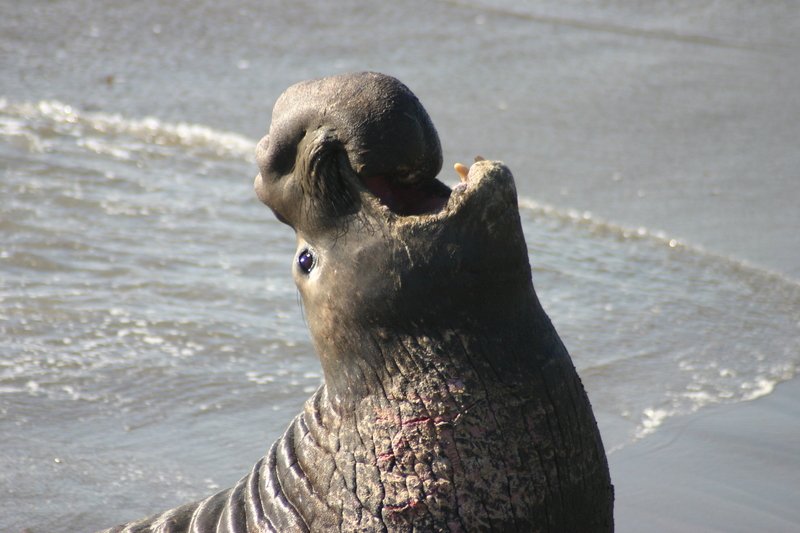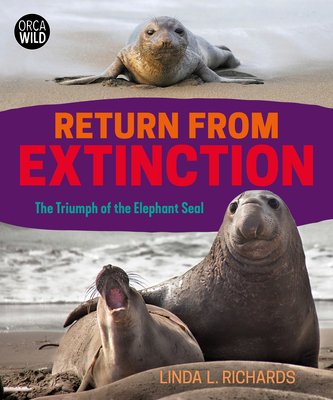An-Animal-a-Month: Pinnipeds
Photo 1986519 / Pinnipeds © Kim Worrell | Dreamstime.com
From seals to seal lions to walruses, pinnipeds await discovery in these captivating nonfiction books.
Join the search for Patches on the antarctic ice shelves! She’s the most successful Weddell seal mother ever studied. Researchers want to know if she’s had her twenty-second pup. If she has, then food has been plentiful and it’s been a good year for the Weddell seal colony. But will they find her? As you scan the ice shelves with the researchers, you’ll see seals, penguins, a minke whale, and more, all shared through stunning photographs with informative captions. The story has just the right amount of tension and excitement to keep the pages turning, and a happy ending. It’s a great read to introduce students to Antarctica, seals, and the process of research. This one made my list of top 25 animal picture books. Share it with children today. Ages 5-8.
Kind of nonfiction: Narrative. The first-person text immerses you in the experience of searching for Patches. The third-person photo captions are written at a slightly higher reading level and are chock full of fascinating facts. (My categorization using Melissa Stewart’s 5 Kinds of Nonfiction.)
Ties to Next Generation Science Standards:
1-LS1-2 (Read texts to determine patterns of behavior of parents and offspring that help offspring survive.) Patches was difficult to find. The researchers think she was busy teaching her pup how to swim. Children will see that animal behavior, behavior that promotes their survival, isn’t always innate; it’s learned.
2-LS4-1 (Make observations of plants and animals to compare the diversity of life in different habitats.) In this title, students will see photographs of some of the mammals that survive in the harsh Antarctic conditions, including the Weddell seals, emperor penguins, adelie penguins, minke whales, and humans. Use other books to compare these animals to those in deserts, mountains, rainforests, and other habitats. Students may note the lack of large, visible plants in Antarctica. Only two species of flowering plants, plus many mosses, liverworts, lichens, and algae survive there.
4-LS1-1 (Construct an argument that plants and animals have internal and external structures that function to support survival, growth, behavior, and reproduction.) Turn to page 25 to learn that a seal’s whiskers allow it to perceive the vibrations created by swimming fish, thus helping the seal find one of its favorite foods. Page 31 shows how seals stay warm in frigid Antarctic waters – they have a layer of fat, called blubber. A seal is about forty percent fat.
A gorgeously illustrated, fun, and informative walrus poem! Come to know a walrus as he goes about his day – flopping into the ocean, diving for clams, playing with a bird, hauling out onto the ice, battling for mates, calling and responding to calls from the colony. You may be surprised at all the sounds a walrus makes. It’s an ear-tickling read-aloud about an unusual mammal. Find more facts in the back matter. If readers are left wondering exactly where in the world walruses live (as I was), they can do a little research and learn about reliable online resources. Ages 5-8.
Kind of nonfiction: Expository literature. The poetic language and narrow focus move this book into the expository literature category. (My categorization using Melissa Stewart’s 5 Kinds of Nonfiction.)
An uplifting conservation success story! Take a deep dive into the remarkable recovery of elephant seal populations. Along the way, you’ll also learn about elephant seal ecology, life history, current research, and new threats. The text is supported by captivating photos, diagrams, and maps. You may come away with a new favorite sea mammal! Ages 9-12.
Kind of nonfiction: A blend of narrative and traditional nonfiction. The introduction and conclusion draw the reader in with a narrative style, sharing the author’s experience with these animals, telling how and why she choose to tell this story, and inviting readers to continue the work to save elephant seals. The chapters are traditional nonfiction, loaded with facts, well-researched and well-written. Find a glossary, further resources, and an idex at the end.
Discover a secret hiding place for seals! When storms blow into the Great Bear Sea, or when predators are on the prowl, seals and other marine mammals worm their way into protective shelters called seal gardens. Stunning underwater photos give a rare glimpse of this sanctuary, while the text shares information about the pinnipeds, otters, and orcas that call the Great Bear Sea home.
Kind of nonfiction: Traditional. Short expository (shares information and ideas in a clear, straightforward manner) paragraphs accompany the photos. (My categorization using Melissa Stewart’s 5 Kinds of Nonfiction.)




